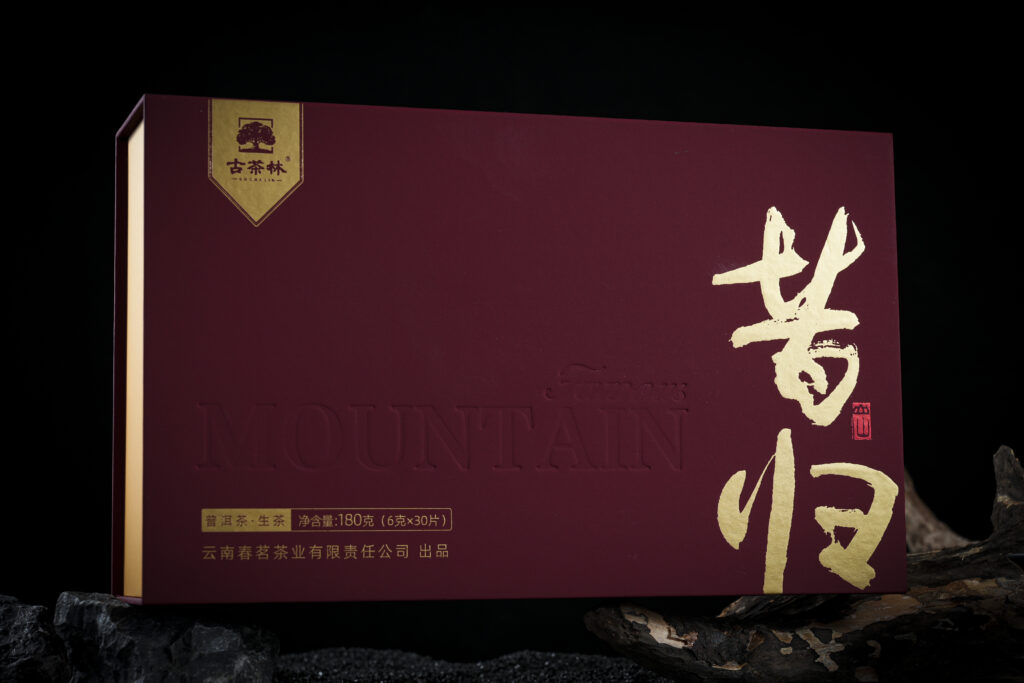The core characteristics of Xigui Ancient Tree Tea
First, the unique geographic environment support
Xigui tea core production area is located in Lincang, Yunnan Province, Bangdong Township, Xigui Village, busy foot of the mountain, about 750 meters above sea level, is a rare low-altitude high-quality tea area. The Lancang River forms an “S”-shaped bend here, and the temperature difference between day and night and the mist of the river water form a natural “fog barrier”, together with the mineral-rich crimson soil, the root system of the tea tree is deeply rooted in the rock layer to absorb the nutrients, which gives the tea soup a unique “rocky rhythm The tea broth has a unique “rocky flavor” and mountainous flavor.
The low altitude and high temperature environment encourages the tea trees to synthesize higher levels of amino acids and aromatic substances, creating a base of both strength and softness.

Second, appearance and raw material characteristics
Xigui tea tree belongs to the mutation group of Bandong big leaf species, the fresh leaves are in the shape of willow leaves, the leaf edge is obvious serration, the buds are short and small and do not show the hairs, the back of the leaves have no downy hairs, and there are no dense tea hairs in the spring tea. The dried tea is tightly knotted like “black tightly knotted”, dark green or black-brown in color, with short and stiff stalks, resembling the shape of artistically carved willow leaves.

III. Hierarchical expression of taste and aroma
Taste Experience Taste Experience
The tea soup is fresh and sweet in the mouth, with no obvious bitterness, the front note is similar to Banzhang’s mellow and full-bodied, and the back note gradually reveals Icelandic sweetness of icing sugar, which is both strong and soft. The tea is strong but delicate, the first drink is subtle and warm, the subsequent impact is like “a needle in a velvet glove”, the throat flavor is cool and long-lasting, and the aftertaste penetrates the mouth like honey.
Aroma Performance
The dry tea has an elegant orchid aroma, and after brewing, the aroma is “three aromas overlapping”: the initial high nectar aroma, the middle section turns to wild mushrooms and icing sugar aroma, and the final note releases a calm woody aroma, with a long-lasting aroma at the bottom of the cup.

Bubble resistance and transformation potential
Xigui tea can be up to 20 bubbles or more, the first 10 bubbles taste strong and full, the middle section of the pectin sense is remarkable, the end of the water is sweet and moist as a spring, the stability is excellent.56 After aging, the green flavor of the new tea is rapidly transformed, three years out of the plum aroma, five years of medicinal aroma, more than 10 years of camphor wood flavor and old rhyme, the consistency of the tea broth and the sweetness of the tea soup is improved year by year, known as “drinkable antiques! It is known as “drinkable antique”.

Tea Soup and Leaf Bottom Characteristics
After brewing, the color of the soup is golden and translucent, with the deepening of the vintage gradually becoming amber, the tea soup is oily and viscous, and the taste is as delicate as rice soup.
The leaf bottom is soft and fresh, the main veins are reddish, and the edges are reddish-brown, reflecting the combination of high-quality raw materials and craftsmanship.
By virtue of its geographical scarcity, taste hierarchy and aging potential, Xigui Ancient Tree Tea has become a model of Puerh Tea with both mountain and wild flavor and elegant style, and is known as the “King of Lincang Banzhang”.
